Bald eagles used to be an endangered species but have since made a partial recovery. There are approximately 900 pairs of breeding bald eagles in Michigan. If you want to know exactly where you can see them, keep reading.

1. Fennville Farm Unit
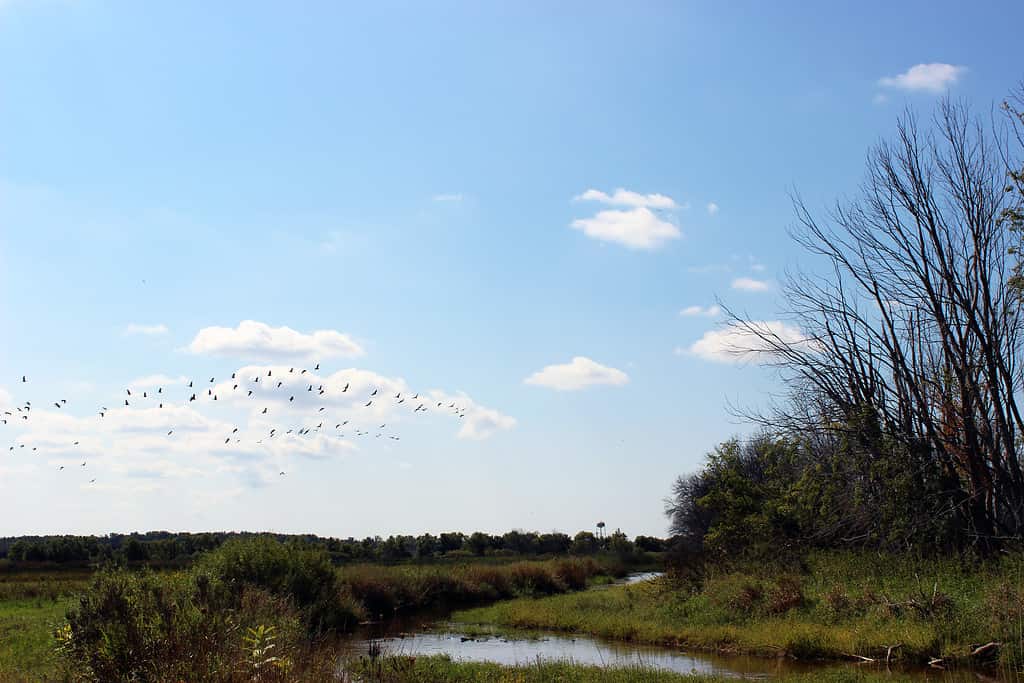
The Allegan State Game Area is a great place to see bald eagles in Michigan.
©USFWSmidwest, Public domain, via Wikimedia Commons – License
The Fennville Farm Unit at Allegan State Game Area is an incredible place to observe bald eagles in their natural habitat. Located near the Kalamazoo River, the area is home to a variety of wildlife, including bald eagles. The unit is known for its excellent bald eagle viewing opportunities.
The Fennville Farm Unit is an ideal spot for birdwatching. It offers a wide variety of habitats for birds to thrive. The area contains a mix of upland, wetland, and open grassland, as well as various deciduous and coniferous trees. It also contains a variety of wildlife, including waterfowl, mammals, reptiles, and amphibians.
The A.M. Todd Company of Kalamazoo transferred the 4,100-acre Fennville Farm Unit to the Michigan Department of Natural Resources in 1949. It was originally used to grow peppermint but is now a sought-after spot for waterfowl hunters. There are plenty of shallow wetlands that have been developed for roosting and hunting purposes. The main species hunted on the property is Canada geese.
This area is a great place to view eagles, white-tailed deer, ring-necked pheasants, upland sandpipers, and wild turkeys.
2. Fish Point State Wildlife Area
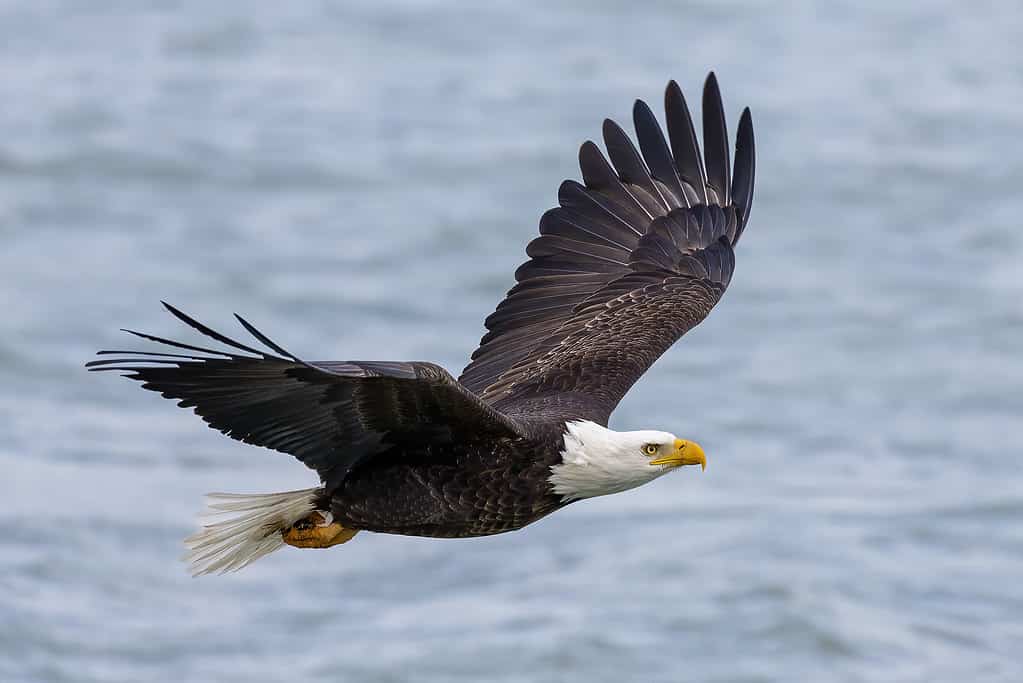
Bald eagles are typically found near bodies of water.
©iStock.com/Karel Bock
Fish Point State Wildlife Area is located on the Saginaw Bay of Lake Huron. This location is ideal for watching migrating birds. It is made up of 2,477 acres of waterfowl habitats and offers duck, Canada goose, and pheasant hunting. It also has many bridges, allowing easy access to all of the hunting zones. There are plenty of birds to observe at Fish Point, including snowy owls, which often spend the winter there.
Fish Point State Wildlife Area in Michigan is a great habitat for bald eagles. The area is characterized by wetlands, rivers, forests, and beaches. It is home to an array of wildlife, including over 100 species of birds, including the iconic bald eagle.
The area is also known for its nesting and roosting sites, which eagles need to thrive. The area’s wetlands and rivers provide bald eagles with a constant source of fish. While the forests provide cover for them to nest and roost.
3. Harsens Island

St. Clair Flats State Wildlife Area near Detroit (Harsens Island) is another good place to see bald eagles.
©Bjoertvedt, CC BY-SA 3.0 – License
Harsens Island at St. Clair Flats State Wildlife Area is a great place to see bald eagles in Michigan. Located on the historic waterfowling shores of the St. Clair Flats, Harsens Island, the Saint Clair Flats State Wildlife Area is a hidden gem for nature enthusiasts and bird watchers alike. To access this breathtaking island, visitors must embark on a short car ferry ride.
Spanning an impressive 3,355 acres, Harsens Island boasts one of the largest freshwater deltas in the United States. This vast expanse of strictly managed waterfowl habitat provides a haven for various species year-round. Mallards are the most prevalent species in this area, but birdwatchers will also encounter black ducks, wood ducks, and pintail. You can also watch Canada geese during their excursions.
Flooded agriculture fields attract flocks of waterfowl, and expansive marsh areas teem with avian life. Every corner of Harsens Island presents a unique setting for birds. Moreover, open waters surrounding the island offer additional scouting possibilities for those eager to spot a bald eagle in Michigan.
4. Muskegon County Resource Recovery Center
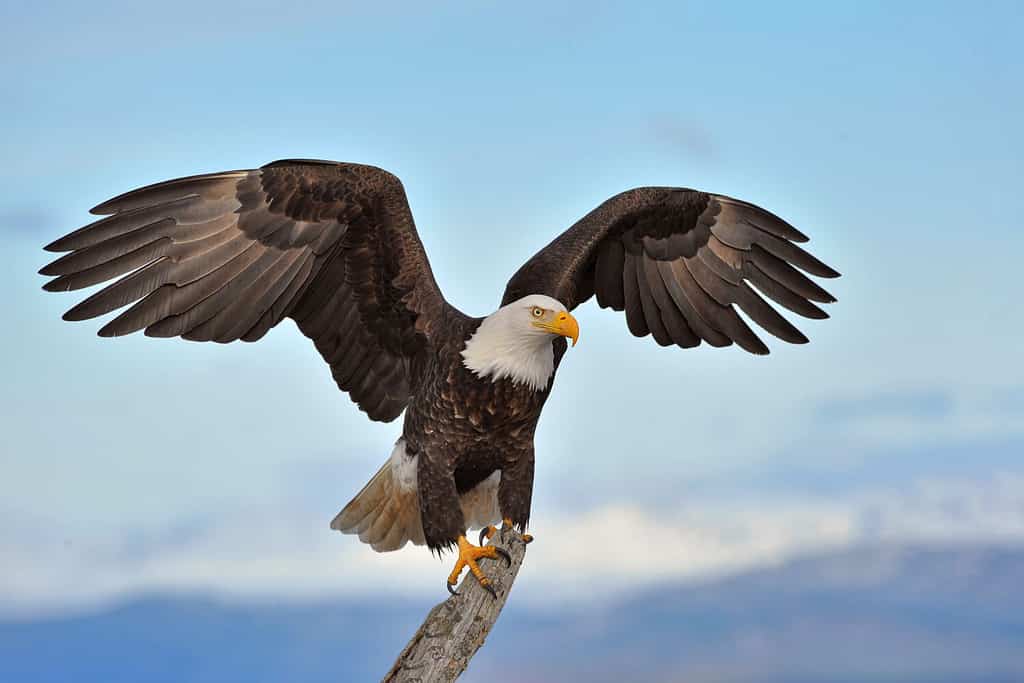
If you want to see bald eagles in Michigan, check out Muskegon.
©FloridaStock/Shutterstock.com
Located in Muskegon, the County Resource Recovery Center is a wonderful place to view bald eagles in Michigan. You can see many other types of birds and water-loving animals there too!
The Muskegon County Resource Recovery Center is considered one of the finest bird-watching sites in Michigan. This area has 11,000 acres of varied habitats. There are 1,000 acres of pine and oak woodlands and 5,000 acres of crops. Birds are attracted to the 20 miles of irrigation ditches and 60 acres of ponds. They are also fond of the 11 miles of shoreline and 1,700 acres of lagoons. There are also a few hundred acres of natural grassland and various wetland marshes. Over 256 species of birds have been spotted at the facility. The rare white wagtail was once witnessed there!
Thousands of geese and ducks spend some of their winter by the Muskegon County Resource Recovery Center. This is an ideal place to watch bald eagles soar, along with peregrine falcons. You will also be able to see snowy owls and snow buntings. Water birds like plovers and sandpipers are aplenty. Not to mention American white pelicans, red phalarope, greater white-footed geese, and wigeons.
The Recovery Center is adjacent to the Muskegon State Game Area and has drawn many birds to the wastewater system. Birders are allowed at the facility if they have a valid pass.
5. Nayanquing Point State Wildlife Area
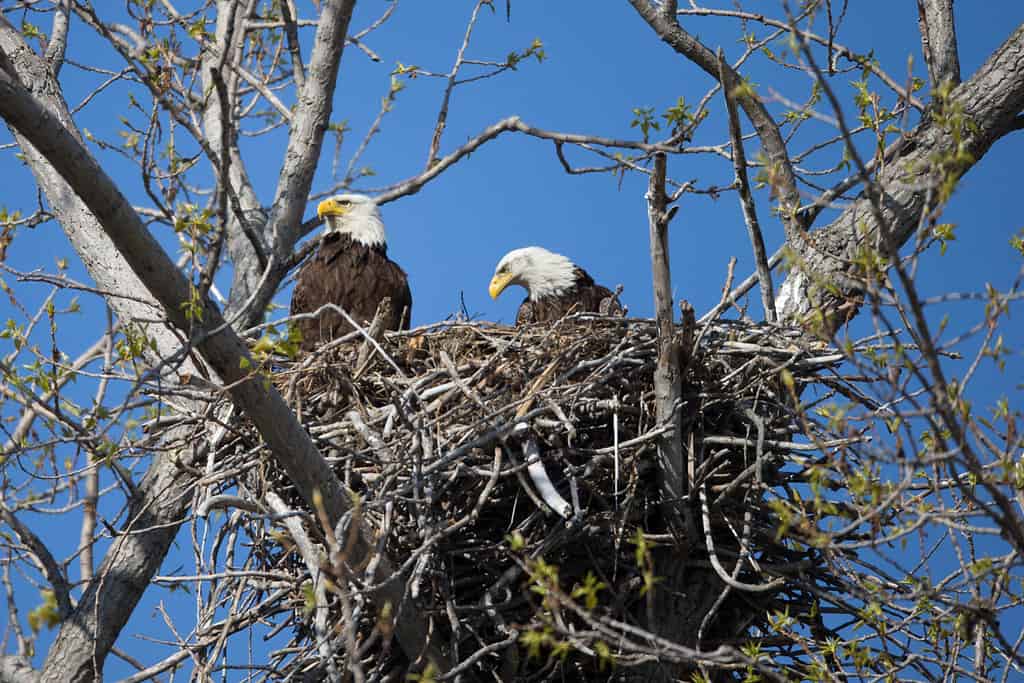
Bald eagles in Michigan breed from March through July.
©Dennis W Donohue/Shutterstock.com
Nayanquing Point State Wildlife Area is situated just three miles north of Linwood, Michigan. It is located on the picturesque western shore of Lake Huron’s Saginaw Bay in Bay County. This is a hidden gem that bird enthusiasts cannot afford to miss.
Spanning a vast 1,505 acres, this wildlife area boasts an unrivaled importance for migratory birds and wetland wildlife species. Not only does it serve as a crucial stopover point during long journeys, but it also offers them a diverse range of high-quality habitats.
Nayanquing Point SWA serves as an ecological sanctuary for various avian species year-round. And it truly comes alive during the migration seasons. As visitors make their way down Kitchen Road towards the viewing platform at the very end, they are greeted by an awe-inspiring spectacle. Countless birds are taking flight or gracefully landing!
The beauty of Nayanquing Point lies not only in its sizeable population of waterfowl – tens of thousands of ducks and geese grace its waters each fall and spring – but also in its ability to attract some truly majestic creatures. Lucky observers can catch sight of bald eagles soaring through the sky with effortless grace.
6. Point Mouillee State Game Area
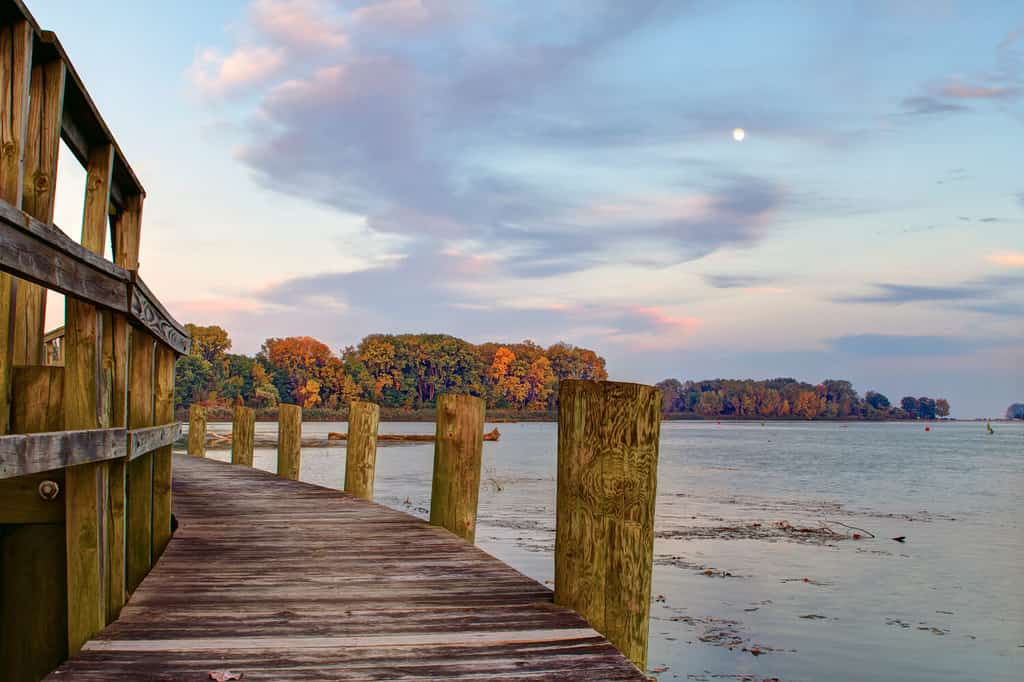
Michigan’s Lower Peninsula is bordered by Lake Erie in the east.
©Dave Manning/Shutterstock.com
Located on the west side of Lake Erie, the lovely Pointe Mouillee State Game Area in Michigan is a haven for waterfowl enthusiasts. Stretching across an impressive 4,040 acres, this remarkable area stands as one of the largest freshwater marsh restoration projects worldwide.
While it has gained its reputation as a top-notch waterfowl hunting destination, Pointe Mouillee offers so much more than that. Its diverse bird species and varied habitats have made it a renowned birding site in the Midwest. Nature lovers flock here to catch glimpses of magnificent bald eagles soaring through the sky alongside osprey and black-bellied plovers. Other common birds to see are glossy ibises and whimbrels.
Beyond its abundant wildlife offerings, Pointe Mouillee also boasts numerous recreational opportunities for visitors to enjoy. From hiking along scenic trails to fishing in pristine waters — there is something for everyone.
7. Shiawassee River State Game Area
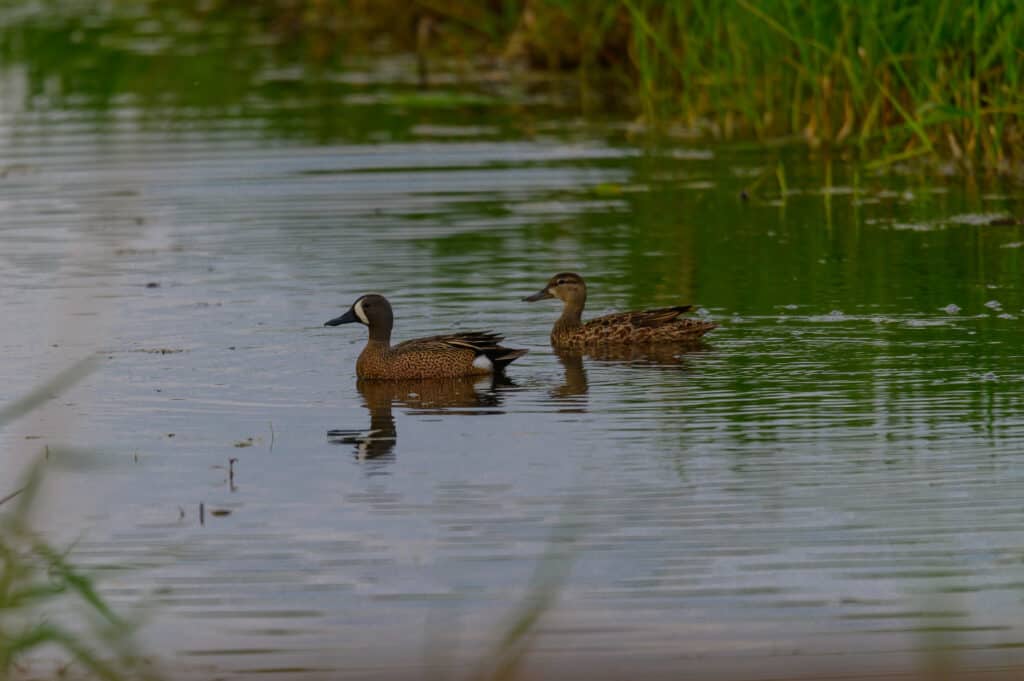
Bald eagles live in many areas in Michigan, including the Shiawassee National Wildlife Refuge.
©James W. Thompson/Shutterstock.com
Located in Michigan, the Shiawassee River State Game Area is a sprawling expanse of nearly 10,000 acres that has been carefully managed to provide optimal habitat for waterfowl. In fact, it is the largest managed waterfowl area in the entire state. Hunters flock to this area for its abundance of hunting opportunities. It also offers something truly special for wildlife enthusiasts and photographers.
The game area’s dikes and access roads provide excellent vantage points from which visitors can observe a diverse range of wildlife species throughout the year. You can watch graceful herons wading through shallow waters. You can also catch glimpses of majestic eagles soaring high above. There are countless opportunities to witness nature at its finest.
One of the highlights of Shiawassee River SGA is the presence of mass concentrations of wetland-obligated species. From rare migratory birds to colorful waterfowl that call this place home year-round, there are endless possibilities for exceptional wildlife viewing experiences.
When to See Bald Eagles in Michigan
Eagles live in Michigan all year round, so you can see them at any time. Some bald eagles breed in Canada, but some stay in Michigan to lay their eggs. If you want to see them in pairs or if you are interested in their brooding and breeding behaviors, visit in the spring.
In Michigan, bald eagles nest from the end of March to the middle of July. You are most likely to see them building a nest, sitting on eggs, or taking care of young hatchlings during this time. Both parents will incubate eggs to keep them warm, feed the young birds, and protect them fiercely from predators.
Eagles are most active from the hours of 8 a.m. to 11 a.m. They are active again in the evening hours right before dusk.
When nesting or perching, bald eagles require tall, adult trees with a wide view of the ground below. They prefer trees in close proximity to a water source. In winter, they tend to gather in places near unfrozen bodies of water with plenty of fish and places to perch. If no unfrozen water is available, bald eagles will congregate in open areas that contain small mammals to eat.
Conservation of Bald Eagles in Michigan

If you want to see baby bald eagles in Michigan, visit in mid-spring and early summer.
©wendy blanchard/Shutterstock.com
Due to the improvement in bald eagle numbers, the U.S. Fish and Wildlife Service (USFWS) no longer needs to closely monitor them all the time. Now, they do a general survey of populations every six years. They will do extra check-ups when needed in areas that are more polluted. Despite these positive changes, human activities still put a strain on the species’ recovery. Particularly the use of lead bullets and fishing tackle, which can poison eagles through their prey.
Today, vehicle collisions and lead poisoning are the two leading causes of death for bald eagles. The latter has been found to affect 47 percent of them, impacting their ability to fly and hunt efficiently. This makes them more vulnerable to roadkill and vehicles. Although advocates are urging a ban on lead bullets, the government still allows their use in hunting in Michigan. The Department of Natural Resources is helping educate hunters and anglers on non-toxic alternatives such as steel sinkers and copper ammunition.
Regulations — The Bald Eagle Protection Act
The Bald Eagle Protection Act is a federal law in the United States. It prohibits the buying, selling, taking, pursuing, shooting, wounding, or in any way disturbing of Bald Eagles. This law was enacted in 1940 and is integral in protecting the Bald Eagle population. Any violation of this law is subject to a fine of up to $100,000.
It is important to be aware of the regulations regarding the Bald Eagle Protection Act. Including the requirement to stay 330 feet away from nests at all times. You can read the full legislature here.
The photo featured at the top of this post is © iStock.com/Schaef1
Thank you for reading! Have some feedback for us? Contact the AZ Animals editorial team.






